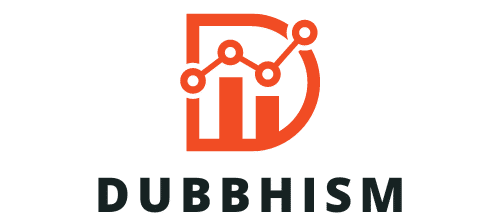Customer feedback is the lifeblood of any business. It provides valuable insights into the quality of your products and services, and can help you understand how your customers perceive your brand. Even more so, it can help you identify areas of improvement and growth. For small service businesses, understanding customer feedback has never been more critical. But how do you collect this feedback effectively? This guide will highlight five effective methods for collecting customer feedback and how they can improve your business.
1. Customer Surveys
Customer surveys are a popular tool used by businesses of all sizes to collect feedback. They can be customized to fit your business needs and can cover various aspects of your operations, from the quality of your service, the features of your product, the user experience, and more.
Dans le meme genre : How Can Small Businesses Leverage Podcasts for Brand Building and Audience Engagement?
Surveys offer a direct line of communication between your business and your customers. By asking the right questions in the right way, you can gather critical data about your customers’ thoughts and feelings towards your business.
There are various tools available to help you create and distribute surveys, from free tools like Google Forms to more advanced and specialized software. Remember to keep your surveys short and to the point, as customers may not have much time to spare.
Lire également : How to Implement a Dynamic Pricing Strategy for Small E-commerce Businesses?
2. Email Feedback
Email is another effective method for collecting customer feedback. Not only does it allow you to reach your customers directly, but it also gives them the freedom to respond at their convenience.
You can use email to ask your customers for feedback after they’ve used your service. You can also distribute surveys through email, or even just ask a simple question to gather some quick feedback.
To get the most out of email feedback, it’s important to make sure your emails are clear and easy to respond to. Make your intentions clear, and explain why you’re asking for feedback. This will encourage more customers to respond and provide honest feedback.
3. Net Promoter Score
Net Promoter Score, or NPS, is a widely used metric for measuring customer satisfaction and loyalty. It’s a simple but powerful tool that can give you a snapshot of how your customers feel about your business.
NPS is calculated by asking customers one question: "On a scale of 0-10, how likely are you to recommend our business to a friend or colleague?" Those who answer 9 or 10 are considered Promoters, while those who answer 0-6 are Detractors. The percentage of Detractors is then subtracted from the percentage of Promoters to calculate the NPS.
While NPS is a great starting point, it shouldn’t be the only tool you use to gather customer feedback. It’s best used in combination with other methods, like surveys and email feedback, to get a more complete picture of your customer experience.
4. Social Media Listening
Social media is a treasure trove of customer feedback. Customers today are more likely to voice their opinions and experiences with a business on social media, making it an invaluable tool for gathering feedback.
By monitoring your social media channels, you can gain insights into what customers are saying about your business. This can be done manually, by regularly checking your social media accounts and responding to comments and messages. Or, you can use social media listening tools, which can monitor multiple platforms at once and alert you to any mentions of your brand.
Remember, it’s not enough to just listen. Responding to comments and messages, both positive and negative, is key to maintaining a positive online reputation and showing your customers that you value their feedback.
5. Review Websites
There are countless review websites on the internet where customers can share their experiences with a business. These include websites like Yelp, Google Reviews, and Trustpilot, among others.
By monitoring these websites, you can gather feedback from customers that you might not otherwise hear from. You can also respond to reviews, both positive and negative, to show that you value your customers’ feedback.
Remember, it’s important to remain professional and courteous when responding to reviews, especially negative ones. Always take the feedback on board and use it to improve your business.
As you can see, there are many methods for collecting customer feedback. By implementing these methods, you can gather valuable insights and make informed decisions to improve your business and customer experience. But remember, the key to effective feedback collection is taking action based on what you learn. So, listen to your customers, act on their feedback, and watch your small service business grow.
6. Live Chat and Support Tickets
One of the most direct methods to collect customer feedback is through live chat and support tickets. These platforms are often used by customers when they encounter issues or have questions about your products or services. This provides a golden opportunity for small businesses to understand their customer experiences in real time.
Live chat is a dynamic feature that allows customers to communicate directly with a representative from your business. The key advantage of live chat is the instantaneous response, which greatly improves customer satisfaction. It also gives businesses the chance to proactively address any issues or concerns before they escalate.
Support tickets, on the other hand, are more formal and structured. Customers submit a ticket when they have a complex issue that can’t be solved immediately. The communication here is tracked and can be reviewed later, providing a wealth of information on common issues faced by customers and how effectively they are resolved. This can guide you in making improvements to your product or service.
When you utilize these platforms, remember to keep the conversation friendly yet professional. Assure your customers that their concerns are important, and make sure to follow up to ensure their issues are resolved. This will not only provide valuable feedback, but also build trust and foster loyalty among your customers.
7. Feedback Boxes
Feedback boxes are a traditional yet effective method of capturing customer feedback. This is a simple tool where customers can drop in their suggestions, complaints or praise about your service or product. While they are more commonly seen in physical locations, they can also be digitized and placed on your website, making them accessible to all your customers.
The advantage of using feedback boxes is that it allows customers to provide spontaneous feedback. This can often lead to unfiltered, honest insights into the customer experience. When analyzing the feedback, look for patterns or recurring issues that need attention.
Whether physical or digital, ensure your feedback box is visible and inviting. Encourage your customers to use it by reminding them that their opinions matter and will be used to enhance the customer service. Although this method may seem old-fashioned, it can still be a powerful tool in your feedback collection arsenal when used correctly.
Conclusion
In today’s hyper-connected world, understanding the customer’s voice is crucial for any small business aiming for growth and sustainability. By using effective feedback tools such as customer surveys, email feedback, NPS surveys, social media listening, review websites, live chat, and support tickets, businesses can gain a wealth of information about their customers’ experiences and satisfaction levels.
Remember, the main goal of collecting feedback is not just to gather data, but to take action based on the insights gained. Use the feedback to identify gaps in your products or services, and develop strategies to improve. Address the concerns raised and appreciate the positive feedback. This not only improves the customer experience but also builds a positive brand image.
Remember, your customers are your greatest source of learning. They provide a mirror to your business, reflecting its strengths and weaknesses from their perspective. Listen to their voice, appreciate their feedback, and strive to continually enhance their experience. This way, your small business will not only survive, but thrive in the competitive market. Remember, the key to successful customer feedback collection is action – listen, learn, and improve.











